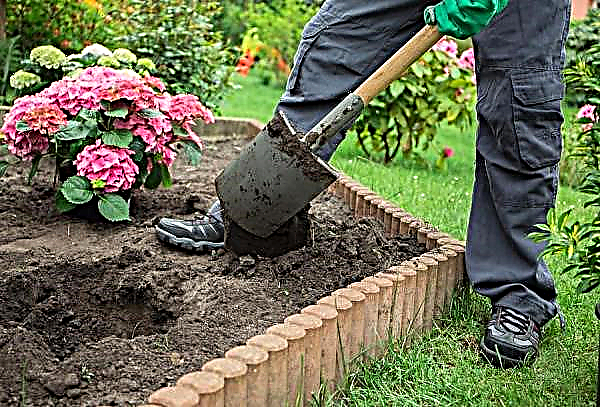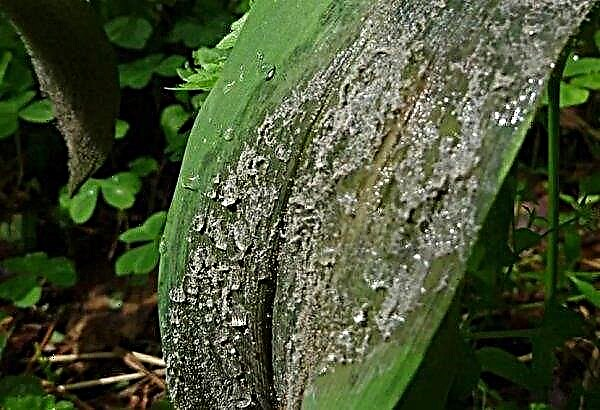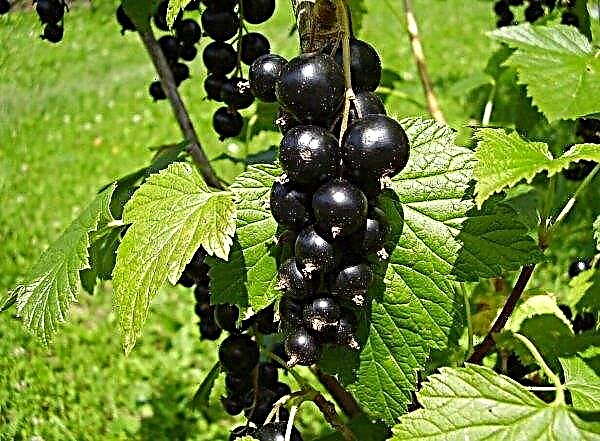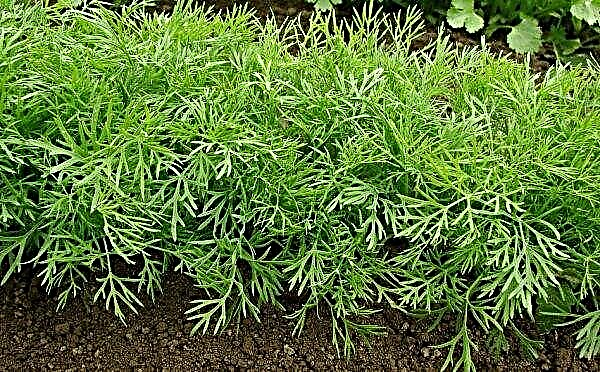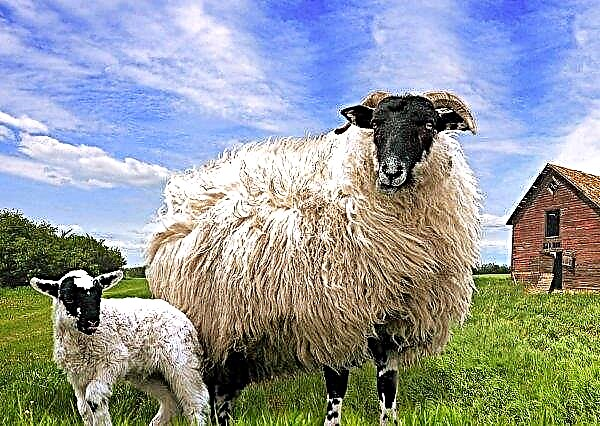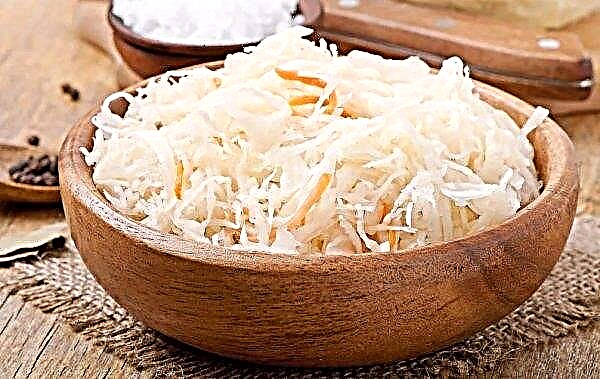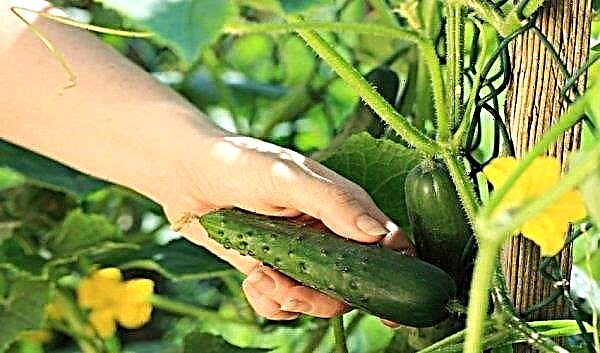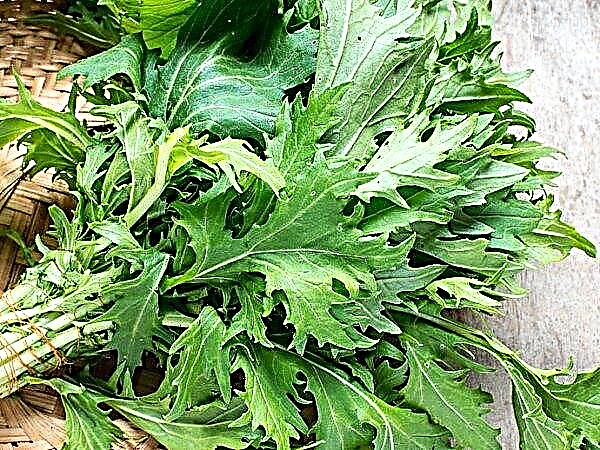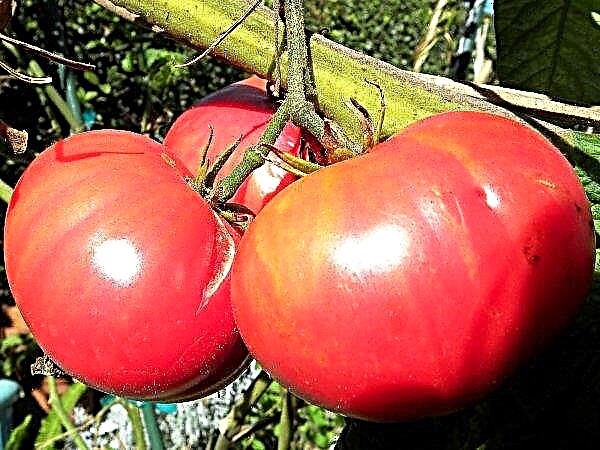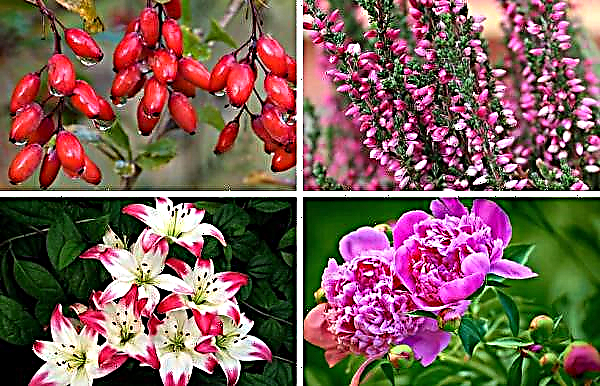Onions are a staple in the human diet. It has nutrients, kills bacteria. About what onions can be planted in the winter, when this process is carried out and how to do it correctly, you will learn from the article.
What onions can be planted in the winter
After autumn tillage, you can plant certain varieties of onions that will cope well with the winter temperature. In order to get a good harvest after winter, you need to familiarize yourself with varieties that are resistant to severe frosts.
Important! Southern varieties are not suitable for planting, because they can not withstand frost.
The following onion varieties are suitable for planting before winter:
- Ruby - refers to mid-season varieties. The bulb is purple. It has high keeping quality. Productivity - 3 kg per m². For cultivation, moderate climatic conditions are necessary; you should not grow this variety in Siberia.
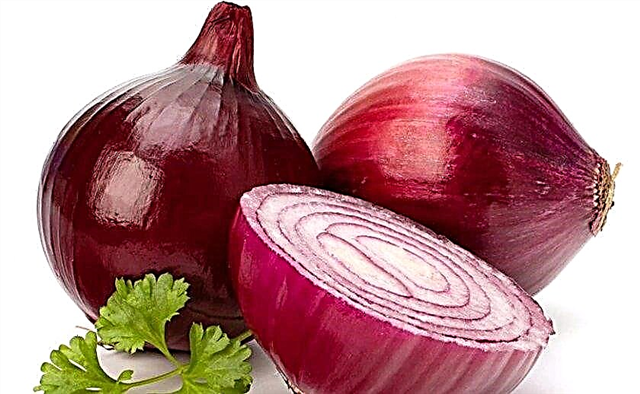
- Siberian annual - This variety is grown from seeds and allows you to get a good harvest - 4 kg per m². This onion is well stored.
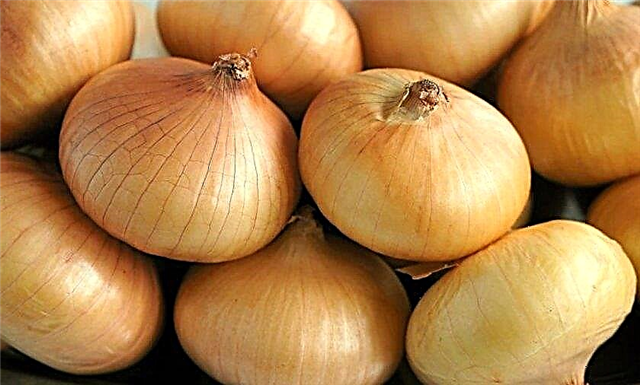
- Robin - refers to red onion. It has a delicate sweet taste. Resists drought and does not require much moisture, so this variety is well suited for the southern regions.

- Senshui - undemanding onions, which can be grown in the harsh conditions of Siberia, while the yield of this variety will be 5 kg per m².
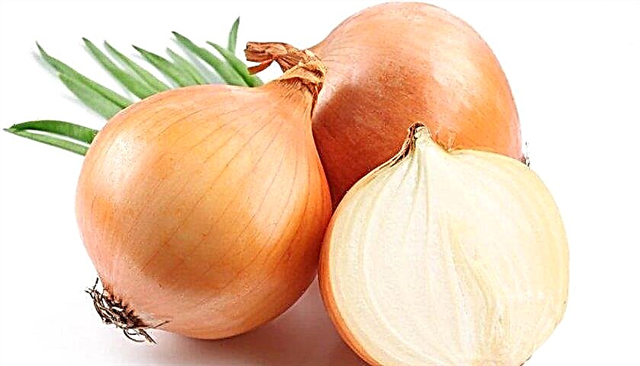
- Mouzon - is a mid-season grade. Resistant to severe frosts, but has a low keeping quality. Mouzon kept only two months.
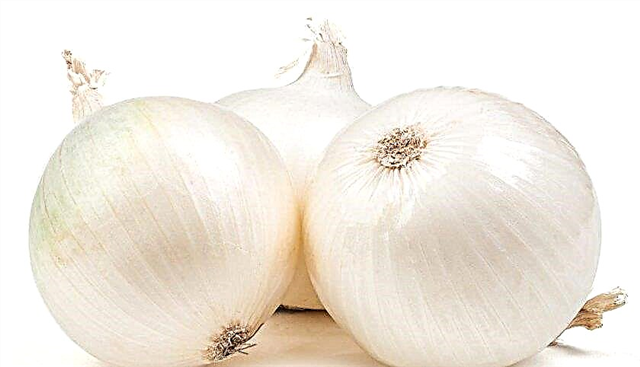
- Lugansk - late ripening, resistant to severe frosts. Perfect for growing in various regions, and also has a high stubbornness.

- Buran - was bred in Ukraine. Not suitable for cultivation in the northern zones of the Moscow Region. It has a high yield and keeping quality, but it can be sick with peronosporosis.
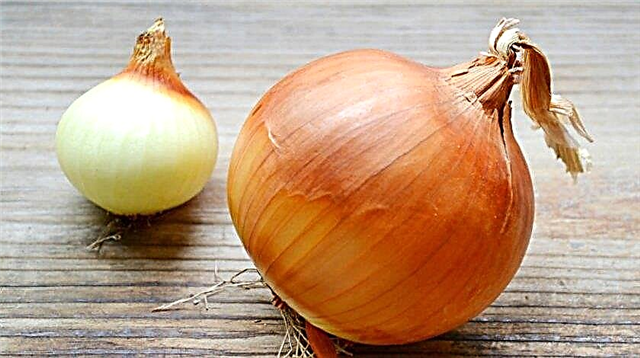
- Leek - Naturally, this is not onion, but it is also possible to plant it under the winter, since from spring to the end of autumn this vegetable will delight you not only with delicious tops, but also with appetizing rhizomes, if stored properly.
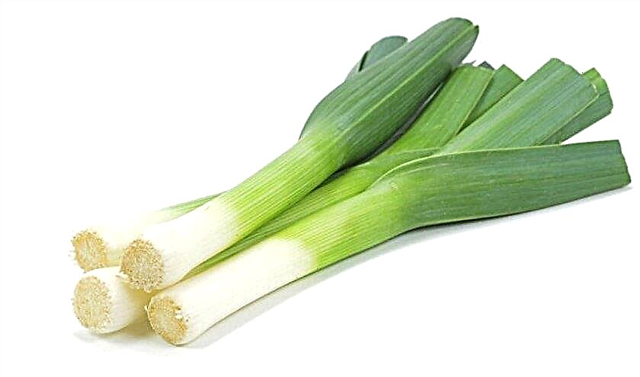
When choosing onions, consider the climatic conditions of your region. You can also plant several varieties, this option is suitable for beginners, as this will allow you to determine the most suitable variety for your region. It is worth paying attention to the fact that onions with a golden shell are bitter, and also have a sharper taste, while white or purple vegetables taste juicy and sweet.
Planting dates
When planting sowing, it is important not only to carefully approach the selection of varieties, but also to determine the time and timing of planting. Many plant a vegetable according to the lunar calendar, thinking that this will improve the crop. Maybe this is so, but you should not rely only on this, it is necessary to take into account climatic conditions.
Regarding time, there are three options for sowing:
- Early. It is carried out after harvesting from August to September, with this method the seeds can release greens before the cold weather begins. Based on this, for this method, it is worth choosing frost-resistant varieties, as well as covering the manifested greens with straw, leaves, so as not to lose seedlings. The main advantage of this method is that the onion will ripen early, and there is also the opportunity to follow the recommendations of the lunar calendar. In this way, you can plant leeks, and in the spring you will receive lush, juicy greens.
- Middle. It is carried out in the middle of October. This is a favorable time according to the lunar calendar, as well as a good time for sowing winter sowing. When planting onions, the temperature at night should be at least -3 ° C, during the day - 0 ... + 5 ° C, while the soil should not be cold. Only seeds can be planted in such soil.
- Late. It is carried out at the end of November in frozen soil; chernushka is used as planting material. Cold soil will not allow seeds to germinate before spring, and only with the advent of heat will the first shoots appear.

Weather conditions and features of the region
Climatic conditions differ in different regions, which is why onion planting dates occur at different times. So, for example, in the Urals it is necessary to plant frost-resistant varieties, since frosts are strong. Planting in this region is carried out from September to October, it must be taken into account so that the bulbs take root before the onset of frost, but they do not sprout. Siberia is famous for its severe frosts, which is why in this region many farmers do not burn with the desire to plant something under the winter.
Important! You should not hesitate to land in the southern part of the Urals, as already in October the first snow may fall.
Despite this, frost-resistant varieties can be grown in Siberia, and after planting they must be covered. Landing in this region should be carried out in September. To plant onions in central Russia and the Moscow Region is in mid-October, in addition, if the temperature is below + 15 ° C, as well as in the presence of snow cover, the onion will not freeze. In the southern part of Russia and in Ukraine, October-November is considered a great time for planting. In the Leningrad Region and Belarus, as well as in other regions with mild frosts, onions can be planted from October 2 to November 10, and there should be a month before the frosts start. Onions are planted at the same time as garlic, since these vegetables closely related.
In the southern part of Russia and in Ukraine, October-November is considered a great time for planting. In the Leningrad Region and Belarus, as well as in other regions with mild frosts, onions can be planted from October 2 to November 10, and there should be a month before the frosts start. Onions are planted at the same time as garlic, since these vegetables closely related.
Processing methods
The yield and quality of the onion obtained depends on how to prepare the seeds for planting. Is it necessary to process sevoc and how best to do it, we will consider in more detail below.
There are several ways to process the set:
- thermal;
- using a salt solution;
- with potassium permanganate or copper sulfate.
There is the problem of bow shooting. If the onion begins to grow in this way, it becomes unsuitable for long-term storage, and the yield of such a bush decreases. So that there are no shooters, it is necessary to observe the timing of sowing the culture, to select and process the seeds correctly.
Processing is also necessary in order to avoid rotting or diseases of planting material, as well as for better growth. Many gardeners are also worried about the question of whether to soak the seeds and what are the ways to process the seeds.
Thermal method
Thermal treatment allows you to awaken the seeds to planting. Seeds must be warmed up slowly. For this, a temperature from + 24 ° C to + 28 ° C is suitable. Small sets are warmed up to 2 weeks, large ones are kept up to 3 weeks. When the seed content is at a temperature of up to + 35 ° С, the aging time is reduced to 1.5 weeks. Next, you need to warm the seeds at a temperature of + 40 ° C for approximately 10-12 hours.
There is an emergency wake-up procedure. For this method, hot water with a temperature of +40 ... + 45 ° C is used. Dip the seeds in such water for 10-15 minutes, then place them in cold water for the same period of time.
Salt solution
Salt treatment is a low-cost method, and also helps to prevent infection of the bulb with a nematode and fungal infections. To make this solution is not difficult. To do this, stir a tablespoon of table salt, dilute in a liter of water and place planting material in this solution for 10–20 minutes. Salt can be replaced with soda.
Manganese or copper sulfate solution
A solution of potassium permanganate or copper sulfate is necessary to disinfect the seed and prevent the appearance of fungal diseases. In order to prepare a solution of copper sulfate, you need to dissolve 1.5 tablespoons of the drug in 10 liters of warm water and put onion for 20 minutes there.
If you will process potassium permanganate plants, you need to make a weak solution. To do this, take 10 g of potassium permanganate and dilute in a liter of warm water, then put onion in this solution for half an hour.
Did you know? Libya is considered the leader in onion consumption. On average, every person in this country eats 33 kilograms of onions per year.
Soil preparation before planting
Soil preparation is an important step before planting onions. In order to get a rich harvest, you need to choose a place for planting. It is best to plant onions where zucchini, peas, beans, tomatoes and pumpkin were previously grown. Farmers do not recommend growing onions in the beds after garlic and carrots, as well as planting onions in the same area at least once every few years. In order for the soil to be rich in minerals, it must be fertilized. Organic and chemical fertilizers can be used as top dressing. Organic fertilizers must be added to the soil in the fall, they have a good effect on the vegetable, but if they are oversupplied, the bulbs may be too small. It is best to use mineral fertilizers, since they can be applied directly at the time of planting and growth of the plant.
In order for the soil to be rich in minerals, it must be fertilized. Organic and chemical fertilizers can be used as top dressing. Organic fertilizers must be added to the soil in the fall, they have a good effect on the vegetable, but if they are oversupplied, the bulbs may be too small. It is best to use mineral fertilizers, since they can be applied directly at the time of planting and growth of the plant.
Fertilizers can be bought in specialized stores or made independently. First you need to prepare a solution with salt and water the plot with it. To prepare the solution, you need to dissolve 3 tablespoons of salt in 10 liters of warm water and add 1.5 kg of crushed fern leaves. Planting onion sets is carried out 2-3 days after the soil dries.
Wood ash is a good fertilizer, because it not only enriches the soil with useful substances, but also prevents root crops from decaying. A pound of ash is added to the bucket of liquid. A good harvest is a successful result of the farmer's long work. If everything is done correctly, the quality of the crop will increase several times.
Landing Technology and Further Care
The landing process looks like this:
- First of all, beds should be marked. To do this, retreat 10 cm from the edge, dig grooves at a distance of 5 centimeters from each other, the depth of the grooves should be up to 2 centimeters. So do the first three grooves. Then indent 15 centimeters and dig the next 3 grooves.
- Seeds are sown at a distance of 1-1.5 cm from each other. The soil around the sowing must be compacted and poured with water at the rate of 2-3 liters per 1 m².
- Next, the bed is covered with a film to accelerate the growth of seeds. The first shoots appear within 5-6 days.
Video: secrets of planting onions in the winter
In order to eventually grow strong and give good yield, you need to follow the basic rules for caring for it: watering, weeding from weeds, disease prevention and pest control. From May to June, watering is carried out once a week, with increasing temperature, the frequency of watering is increased to two times a week. At the same time, 5-10 liters per 1 m² are needed. In July, watering is again reduced due to bulb ripening. Watering is carried out by the method of sprinkling, as this allows you not to harm thin sprouts.
Did you know? Man used onions as food in Ancient Mesopotamia. An ancient book of culinary recipes of that period has survived, embossed on clay tablets, which confirms that onions were widely used by ancient people in many dishes.
Loosening of the soil is carried out only if the soil is very compacted. Loosening is carried out in wide aisles, deepening by 2-3 cm. Top dressing of plants will also increase their productivity. To do this, take a glass of bird droppings or mullein and breed in 10 liters of water. Next, add a spoonful of urea and pour over such a solution at the rate of 2-3 liters per 1 m². You can find out more about what fertilizers are used to feed onions in a specialized gardening shop. The proper selection of seeds, planting and care for them will provide farmers with a rich harvest and delicious dishes from freshly grown onions. Pay attention to the climatic zone when planting, as well as the conditions for caring for the plant and tips on how to prepare the soil and seeds for planting. Onions will grow magnificent and will make any of your dishes healthy and tasty.
The proper selection of seeds, planting and care for them will provide farmers with a rich harvest and delicious dishes from freshly grown onions. Pay attention to the climatic zone when planting, as well as the conditions for caring for the plant and tips on how to prepare the soil and seeds for planting. Onions will grow magnificent and will make any of your dishes healthy and tasty.









